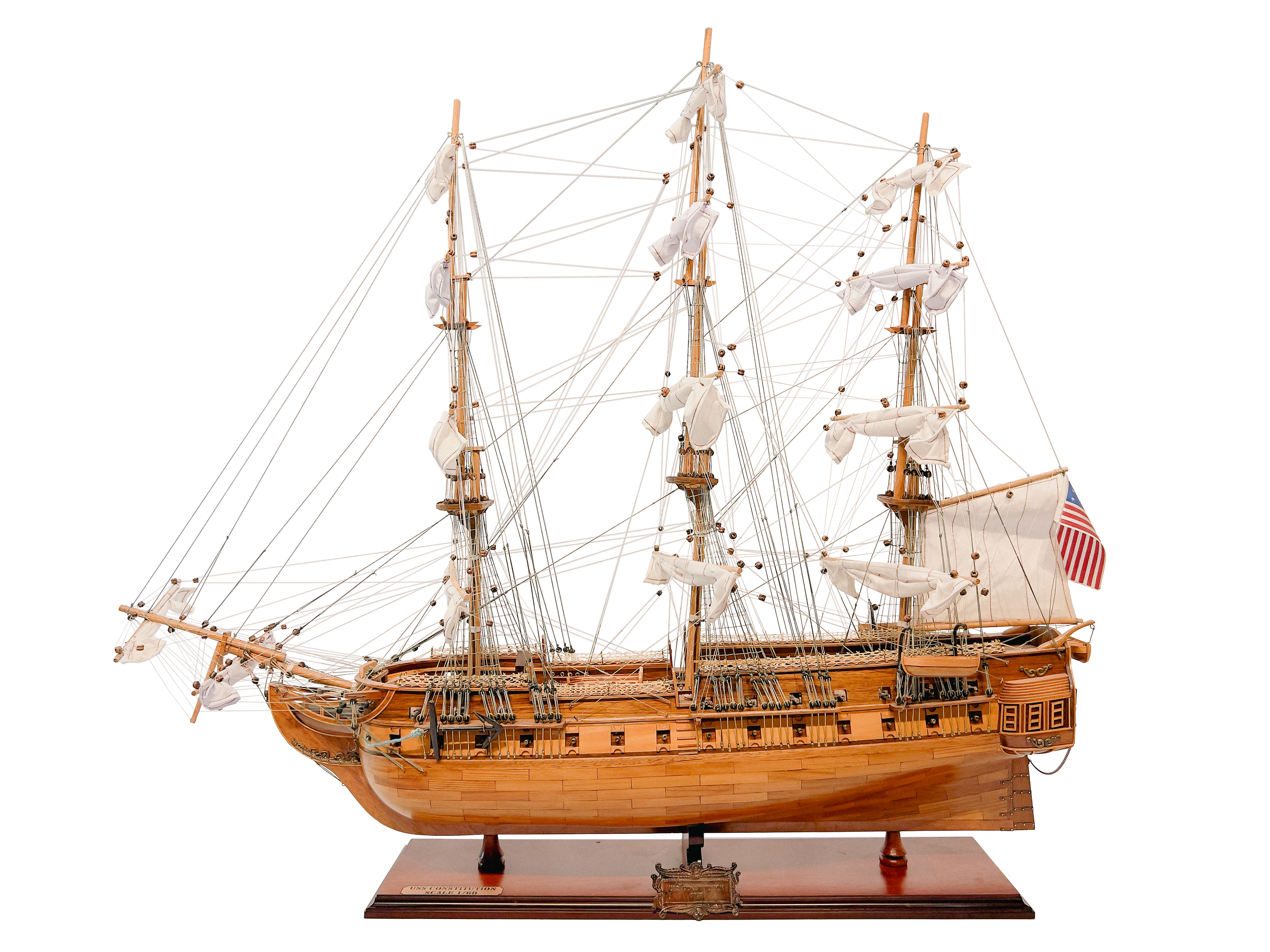zoom in on model
16th–19th Century
Xebec Frigate
Scale 1/48
Credit: Museum of Military Models, Clyde, Texas. Private Collection of Warren D. Harkins.ON VIEW
Province
Type: Sailing vessel
Place of origin: Probably Algeria
Service History
In service: 16th to mid-19th century
Used by: Mainly MENA states
Sometimes used in Europe
Specifications
Mass: 100–200 tons, in some cases up to 600 t
Crew: 90 to 400
Description
A xebec (/ˈziːbɛk/ or /zɪˈbɛk/), also spelled zebec, was a Mediterranean sailing ship that was used mostly for trading. Xebecs had a long overhanging bowsprit and aft-set mizzen mast. The term can also refer to a small, fast vessel of the sixteenth to nineteenth centuries, used almost exclusively in the Mediterranean Sea.
Xebecs were ships similar to galleys primarily used by Barbary pirates, which have both lateen sails and oars for propulsion. Early xebecs had two masts while later ships had three. Xebecs featured a distinctive hull with pronounced overhanging bow and stern and rarely displaced more than 200 tons, making them slightly smaller and with slightly fewer guns than frigates of the period.
A classic xebec design- the San Giovanni with the Genovese Flag, 1805, watercolour by Nicolas Cammillieri, 19th century.History & Related Content
Use by Barbary corsairs
These ships were easy to produce and were cheap, and thus nearly every Corsair captain (Raïs) had at least one xebec in his fleet. They could be of varying sizes. Some ships had only three guns while others had up to forty. Most xebecs had around 20–30 cannons, and the overwhelming majority had swivel guns equipped.
After the 18th century, galleys became increasingly outdated and xebecs became the preferred ships of Barbary pirates thanks to their heavy and effective use of wind power, reduced need for slaves to row, ability to carry more cannons than a galley, and overall cheapness, speed, and maneuverability.
Xebecs were generally faster than contemporary ship types until the introduction of steamships.
Corsairs built their xebecs with a narrow floor to achieve a higher speed than their victims, but with a considerable beam in order to enable them to carry an extensive sail plan. The lateen rig of the Xebec allowed the ship to sail close hauled to the wind, often giving it an advantage in pursuit or escape. The use of oars or sweeps allowed the xebec to approach vessels that were becalmed. When used as corsairs, the xebecs carried a crew of between 90 and 400 men.
The use of square rigs among pirates was initially rare, although after the 1750s a mix between lateen and square rigs became much more widespread.
A classic xebec design- the San Giovanni with the Genovese Flag, 1805, watercolour by Nicolas Cammillieri, 19th century.A high-quality set of Xebec Algerian 1830 ship model plans ship model plansUse by European powers
Some victorious xebecs of the Spanish Navy, about 1770:
Andaluz, 30 guns (4 × 8-pounders)
Africa, 18 guns (4-pounders)
Atrevido, 20 guns
Aventurero, 30 guns (3 × 8-pounders)
Murciano, 16 guns, 4 pedreros (light swivel guns)
San Antonio
Notable xebecs of the French Navy include four launched in 1750:
Ruse, 160 tons, 18 guns
Serpent, 160 tons burthen, 18 guns
Requin, 260 tons burthen, 24 guns
Indiscret, 260 tons burthen, 24 guns
In the eighteenth and early nineteenth centuries, a large polacre-xebec carried a square rig on the foremast, lateen sails on the other masts, a bowsprit, and two headsails. The square sail distinguished this form of a xebec from that of a felucca which is equipped solely with lateen sails. The last of the xebecs in use by European navies were fully square-rigged and were termed xebec-frigates.
The British brig-sloop Speedy's (14 guns, 54 men) defeat of the Spanish xebec-frigate El Gamo (32 guns, 319 men) on 6 May 1801 is generally regarded as one of the most remarkable single-ship actions in naval history. It was the foundation of the legendary reputation of the Speedy's commander, Lord Cochrane, which has in turn provided the inspiration for sea fiction such as Patrick O'Brian's Master and Commander.
A Spanish xebec in 1826, Plate 33 in Collection de Toutes les Especes de Batimens… 3eme Livraison by Jean Baugean, from the collections of National Maritime Museum, Greenwich, London.






























